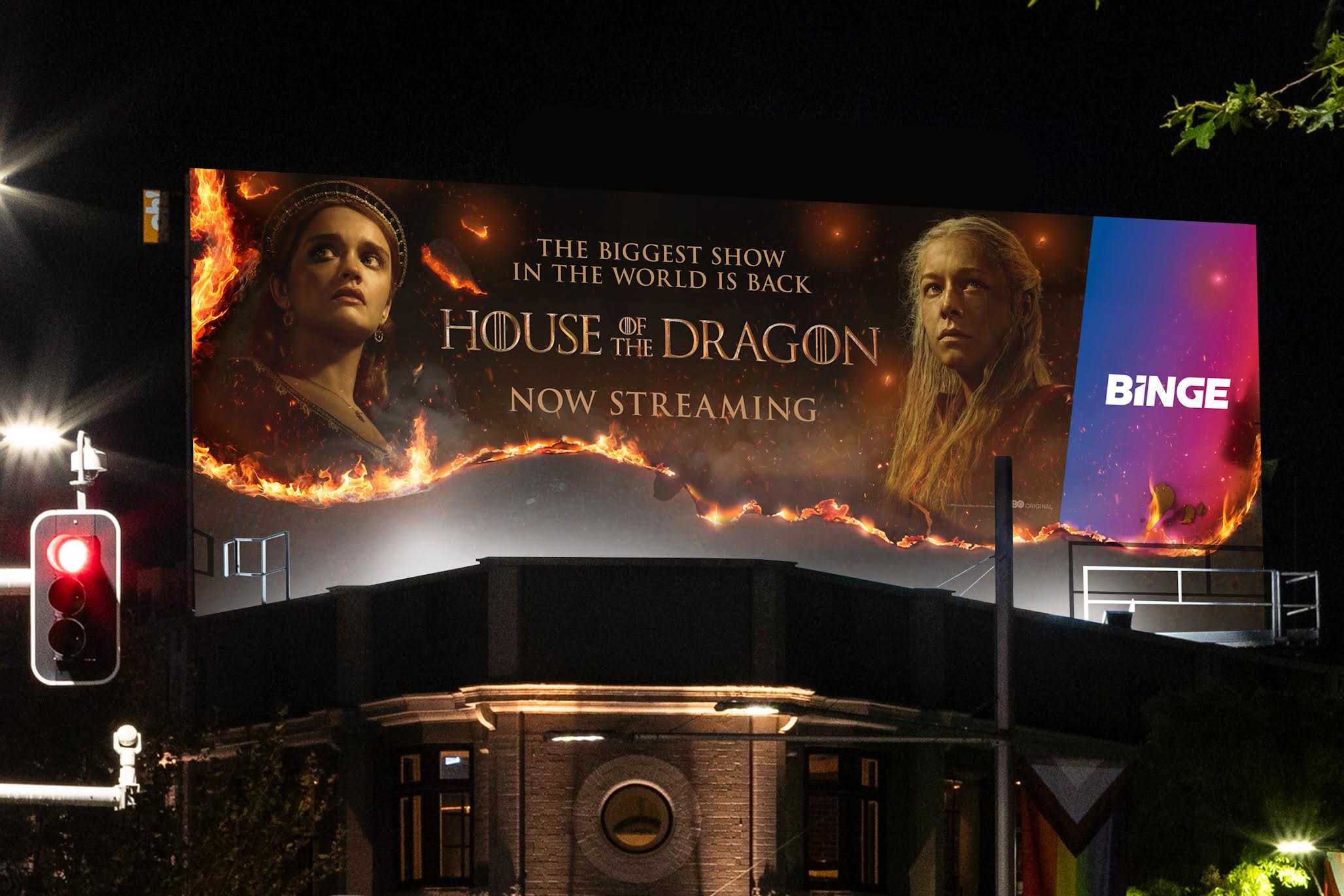As the advertising industry moves into 2025, Out-of-Home (OOH) is emerging as a frontrunner for innovation, creativity, and measurable impact. Leaders from JCDecaux, QMS, and oOh!Media share their insights on the transformative factors reshaping the OOH sector. Here’s how this traditional medium is evolving into a sophisticated platform for dynamic storytelling, sustainability, and data-driven results.
5G and connected cities: Unlocking new creative frontiers
The rise of 5G and connected cities is a game-changer for OOH. JCDecaux highlights the potential for hyper-targeted, real-time campaigns driven by advanced data tools. Imagine airport ads tailored to flight schedules or interactive billboards at train stations offering commuters exclusive deals via their smartphones. John Harris, general manager – sales at JCDecaux, notes, “5G will allow brands to create campaigns that feel immediate and personalised, making the experience more valuable for both advertisers and audiences.”
QMS envisions a future where billboards no longer rely on pre-defined playlists but leverage IoT (Internet of Things), AI, and real-time data to display the most relevant creative. “This will redefine the way brands engage audiences, turning static screens into dynamic, responsive canvases,” says Christian Zavecz, chief strategy officer at QMS.

‘As OOH assets can access greater bandwidth and connectivity, we expect increasing use of dynamic creative campaigns that are updating in real-time. This includes support for full motion video on select inventory, as well as more advanced programmatic formats that take advantage of connected data sources,’ Christian Zavecz, chief strategy officer, QMS, said.
Programmatic OOH: Growth and integration
Programmatic OOH is transforming how brands interact with audiences. JCDecaux sees 2025 as a year where the convergence of OOH with TV and digital channels will define success. Flexibility, dynamic ad scheduling, and precise targeting are driving adoption, though education remains a key hurdle. “The key is showing advertisers how seamlessly programmatic OOH can integrate into their broader media mix. It’s about combining the strengths of each platform,” says Harris.
Similarly, oOh!Media reports a significant uptick in programmatic trading. Chris Freel, group sales director, attributes this growth to its flexibility and omnichannel potential, noting, “The ability to integrate programmatic OOH with broader campaigns is reshaping the medium’s role in omnichannel strategies.”

‘We’ve seen a significant increase in volume traded programmatically across 2024 and expect that growth to continue in 2025. Many agencies and clients have moved past test and learn and now have pDOOH as part of their business as usual, with formalised strategic approaches developed to address the optimal use of the medium,’ Chris Freel, group sales director, oOh!media, said.
Sustainability takes centre stage
OOH is aligning itself with eco-conscious advertising as brands and media owners look to sustainability. JCDecaux has made strides with its Scope 3 carbon measurement tool and a 70% reduction in emissions since 2021. Their focus extends beyond the environment to social governance, including $2.5 million in First Nations partnerships. oOh!Media is advancing sustainability with innovations like EcoBanner, a recyclable billboard skin that eliminates landfill waste, and transitioning 14,000 ad panels to renewable energy sources. Freel notes, “Sustainability is not just a goal; it’s a necessity. Innovations like energy-efficient creative are helping clients make a measurable impact.”
Measuring Impact: From attention to ROI
As clients demand greater accountability, the industry is stepping up. MOVE 2.0, launching in 2025, will revolutionise OOH measurement by incorporating visibility and attention metrics. JCDecaux’s Harris highlights the importance of these advancements, stsaying they will go beyond reach to demonstrate real behavioural results. QMS highlights its partnership with Amplified Intelligence to link human attention in OOH advertising to essential brand metrics. This study is set to expand in 2025, providing deeper insights into the relationship between engagement and campaign success.
Shifts in mobility and urbanisation are refining OOH placement strategies. High-traffic hubs like airports and metro stations remain pivotal, but advancements in data analytics are enabling more contextually relevant campaigns. oOh!Media’s Freel anticipates that the Sydney Metro rollout and new tenders in key regions will offer fresh opportunities for advertisers to connect with urban audiences.

‘With access to larger volumes of data we can deliver hyper-targeted messages using richer data sets. For example, airport ads could integrate flight schedules, language preferences, or destination-specific offers,’ John Harris, general manager – sales, JCDecaux, said.
Looking ahead calls for more creativity and responsibility
Creativity will remain central to OOH’s growth in 2025. From 3D executions to art-inspired public space advertising, brands are pushing boundaries to captivate audiences. JCDecaux predicts that as sustainability and accountability become non-negotiable, the convergence of digital and traditional formats will deliver unparalleled reach and impact. OOH’s ability to blend scale, personalisation, and accountability positions it as an indispensable part of modern media strategies. As Tara Coverdale, group director – data & insights at oOh!Media aptly sums up, “With growing audiences, enhanced measurement, and a focus on sustainability, OOH is entering its most exciting phase yet.”
In 2025, OOH aims to no longer be just a medium for mass visibility, but a progressive, measurable, and sustainable platform that connects brands with audiences in meaningful and impactful ways.
